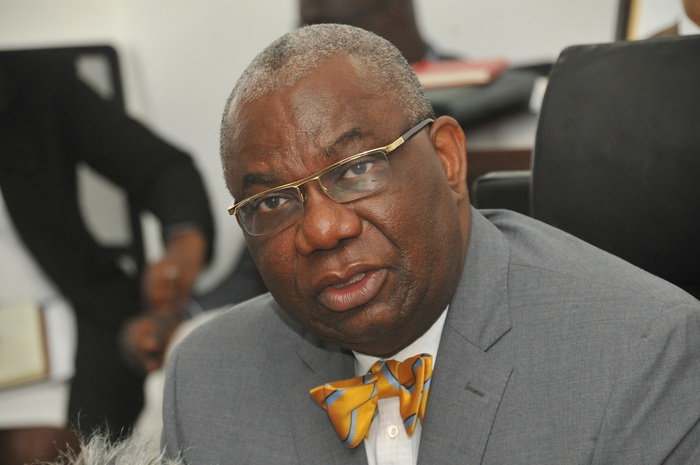Ghana Hopes Lithium Load Will Lure Automakers plus drive solar
Ghana might become the world’s next hot spot for lithium, after large quantities of the element and other base metals have been identified in the Ashanti and Central regions, the Ghana Minerals Commission said.
While it’s too early to confirm the presence of commercial quantities, Ghana officials hope this discovery will capture the attention of Tesla and other electric car manufacturers that use lithium-ion batteries, such as Nissan Motor Co. Ltd., General Motors Co., and Ford Motor Co.
“The country can play a leading role in the electronic car business if the mineral is discovered in commercial quantity,” said Chief Executive of the Minerals Commission Kwaku Addai Antwi-Boasiako.
John Peter Amewu, minister for lands and natural resources, recently led a nine-member Ghanaian delegation to attract investors to the mining sector as part of the 2018 Mining Indaba Conference last month in South Africa.
Since early mining days, gold has been the focus of mining in Ghana, particularly in the Ashanti region. The world’s second-largest producer of gold after South Africa is Ghana, where diamonds and base metals such as manganese ore, iron, and bauxite are mined as well.
While local news reported that lithium is a new discovery in the Volta region, Isaac Abraham, acting head of communications for the Ghana Minerals Commission, told Bloomberg Environment March 20 that investigations still need to be done there. Only the Ashanti and Central regions of Ghana that have confirmed the occurrence of lithium, he said.
The element “has existed for some time,” Abraham said, as the Egyasimanku Hill lithium resource was defined by the Ghana Geological Survey in 1962 but remained unnoticed for years.
Commercial product won’t come for years, according to Christopher Perrella, chemicals analyst at Bloomberg Intelligence.
“It will be a number of years until you see commercial product. It may be a decade before you see commercial extraction,” he said. “Extraction and processing it chemically so that battery makers would use it is a significant investment in green fields. It must then must meet quality standards. This takes capital and industrial know-how.”
Ghana does have a location advantage. “You can get it out in ocean and into global market, but it depends on global demand in 10 years and that’s so far out,” Perrella adds.
Valuable Lithium
The lightest metal on the periodic table, lithium has a unique chemical profile and is often alloyed with aluminum, copper, manganese, and cadmium to make high-performance alloys for aircraft. A derivative, lithium hydroxide, is used to absorb carbon dioxide in space vehicles. Lithium compounds also are used as mood-stabilizing drugs.
Lithium batteries are common in a variety of consumer devices—from laptops, mobile phones to golf carts and electronic cigarettes—and has industrial applications as well, including heat-resistant glass and ceramics, lubricating greases, and fusion fuel in staged thermonuclear weapons.
The lithium industry is projected to grow over the next five years, according to a 2017 report from consultancy IbisWorld.
This growth and the rising green movement will fuel demand for electric vehicles and energy storage systems that use lithium-ion batteries. Overall, revenue is projected to grow at an annualized rate of 1.4 percent over the five years to $965 million, according to IbisWorld.
The element is also part of rechargeable batteries in electric cars and aluminum-lithium for spacecraft. Neither Tesla Inc. nor SpaceX responded to Bloomberg Environment’s request for comment.
IronRidge Agreements
IronRidge Resources Ltd. last year said it identified “multiple, significant outcroppings of lithium in Ghana.” Its mining operations now map and sample the region.
The Australian company, through a joint venture with Ghanaian companies Obotan Minerals Ltd. and Merlink Resources Ltd., now holds the rights to acquire historic Egyasimanku Hill, which surveys indicate has a potential deposit of 1.48 million tons.
“IronRidge has the Central Region,” Abraham told Bloomberg. “There is also lithium in part of the Ashanti Region, but no one has done any work on that area as of now.”
The company recently expanded its lithium interests in Ghana, including an agreement with Ghanaian company Joy Transporters that provides IronRidge with exclusive rights to an exploration license in the Central Region town of Saltpond and lithium project in Cape Coast.
IronRidge also has exclusive rights to a prospective lithium license portfolio covering 1,177 square kilometers (454 square miles) in neighboring Cote d’Ivoire.
“Enhancing and consolidating the company’s ground position along the Cape Coast lithium project corridor is an integral step in the company’s strategy of building a lithium project pipeline in Ghana,” IronRidge Chief Executive Officer Vincent Mascolo said in a statement.


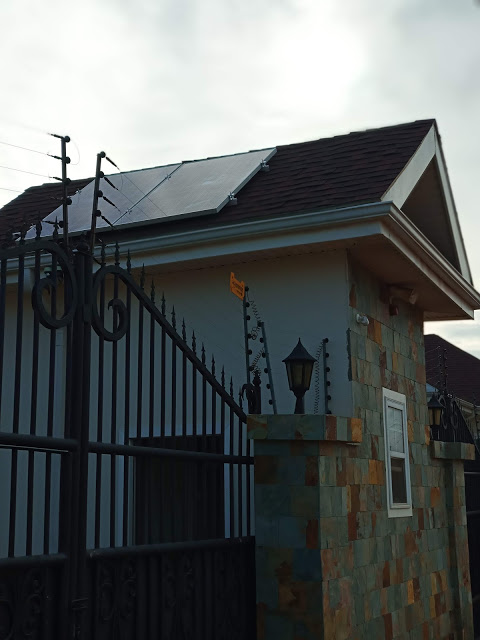
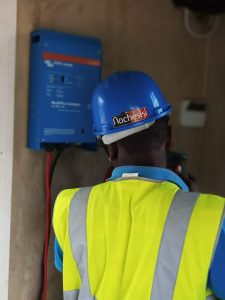




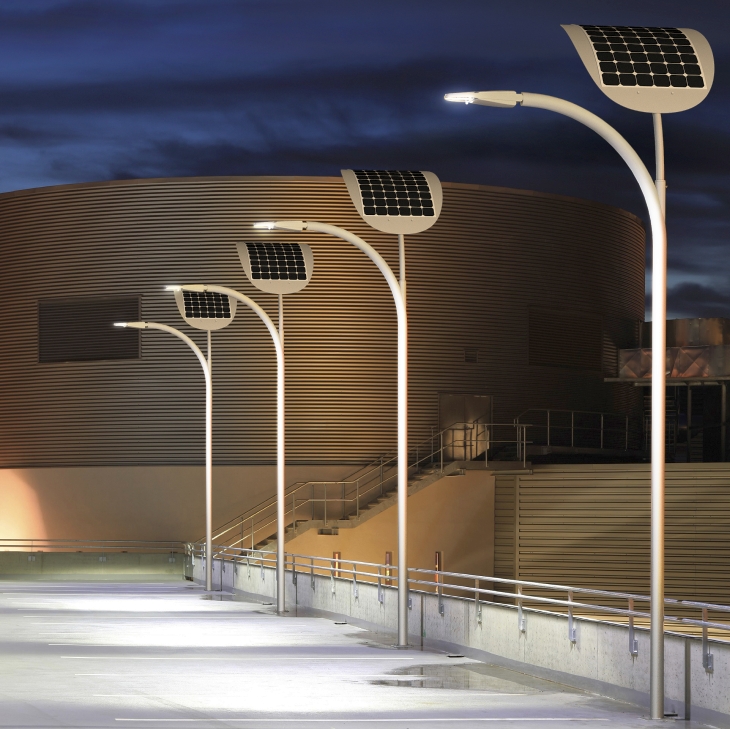
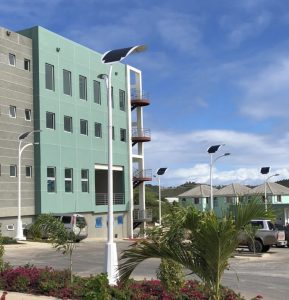
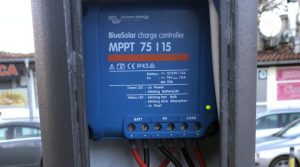

 If you are a state broadcaster, Fiji is a difficult region.It takes Victron Energy to power Digital TV in Fiji
If you are a state broadcaster, Fiji is a difficult region.It takes Victron Energy to power Digital TV in Fiji



 Education and Grid electricity can’t be taken for granted when you happen to live in one of the most sparsely populated countries on the planet. If you live in the rural part of any country ‘public services’ like education has a habit of passing you by; but in Botswana – with its half-a-million square kilometers of rural land – most of the country is ‘off grid’. The Government is making one of its biggest investments to make sure children don’t miss out on a modern education…The Ministry of Education and Skills has embarked on an ambitious project to provide 20 rural schools with state of the art off-grid Solar Power plants – each providing an impressive 90 to 150kVA. That’s enough for the School’s pupils, office block, kitchen and up to 10 associated ‘staff houses’. A micro-grid.
Education and Grid electricity can’t be taken for granted when you happen to live in one of the most sparsely populated countries on the planet. If you live in the rural part of any country ‘public services’ like education has a habit of passing you by; but in Botswana – with its half-a-million square kilometers of rural land – most of the country is ‘off grid’. The Government is making one of its biggest investments to make sure children don’t miss out on a modern education…The Ministry of Education and Skills has embarked on an ambitious project to provide 20 rural schools with state of the art off-grid Solar Power plants – each providing an impressive 90 to 150kVA. That’s enough for the School’s pupils, office block, kitchen and up to 10 associated ‘staff houses’. A micro-grid. The government recognizes the importance of education and seeks to offer an equal opportunity to all Botswanan children -regardless of whether they grow up in the city – or remotely. No electricity means no computers – and without learning computer skills a child becomes part of a lost generation …unable to reach his/her full potential. For that reason the Government have signed off this initiative which represents one of their biggest, newest investments.
The government recognizes the importance of education and seeks to offer an equal opportunity to all Botswanan children -regardless of whether they grow up in the city – or remotely. No electricity means no computers – and without learning computer skills a child becomes part of a lost generation …unable to reach his/her full potential. For that reason the Government have signed off this initiative which represents one of their biggest, newest investments. A long way from the cities, sophistication of these electronic installations is an unfamiliar sight – but no short-cuts have been made in guaranteeing the future of electricity provision, with state of the art power plants which may comprise of up to 12 Inverters 48V
A long way from the cities, sophistication of these electronic installations is an unfamiliar sight – but no short-cuts have been made in guaranteeing the future of electricity provision, with state of the art power plants which may comprise of up to 12 Inverters 48V  Now the very latest technology is available to these children as an educational tool. No matter that their school is far out of town, increasingly rural children can enjoy the same advantages as children in the cities.By taking a long-term view the power needs of remote schools, villages – even towns – can be met through installing Solar Powered Micro-Grids. The power used by these far-sighted schemes is cleaner; uses less infrastructure; is more easily maintained; and is more secure from acts of god …or civil unrest. Not only that, they have their costs under control …and the price they pay for their power, over the lifetime of the installation is a fraction of the price paid by those of us who are grid-connected.
Now the very latest technology is available to these children as an educational tool. No matter that their school is far out of town, increasingly rural children can enjoy the same advantages as children in the cities.By taking a long-term view the power needs of remote schools, villages – even towns – can be met through installing Solar Powered Micro-Grids. The power used by these far-sighted schemes is cleaner; uses less infrastructure; is more easily maintained; and is more secure from acts of god …or civil unrest. Not only that, they have their costs under control …and the price they pay for their power, over the lifetime of the installation is a fraction of the price paid by those of us who are grid-connected. Think about this: In the UK the average annual bill for electricity today is £600. The average annual electricity price-rise is 8%. In 25 years time (the lifetime of a solar panel) the average annual bill for electricity will be £4,100. The economic argument for generating your own electricity from Solar Power has been won – it’s cheaper.In many ways – the Botswanan Government, and Botswanan schoolchildren are showing us the way ahead.
Think about this: In the UK the average annual bill for electricity today is £600. The average annual electricity price-rise is 8%. In 25 years time (the lifetime of a solar panel) the average annual bill for electricity will be £4,100. The economic argument for generating your own electricity from Solar Power has been won – it’s cheaper.In many ways – the Botswanan Government, and Botswanan schoolchildren are showing us the way ahead.
 Financed mainly by charitable donations the surveillance installations are highly mobile, frequently moved, and can be packed for deployment by truck – or even slung under a helicopter and flown-in to new surveillance sites.
Financed mainly by charitable donations the surveillance installations are highly mobile, frequently moved, and can be packed for deployment by truck – or even slung under a helicopter and flown-in to new surveillance sites.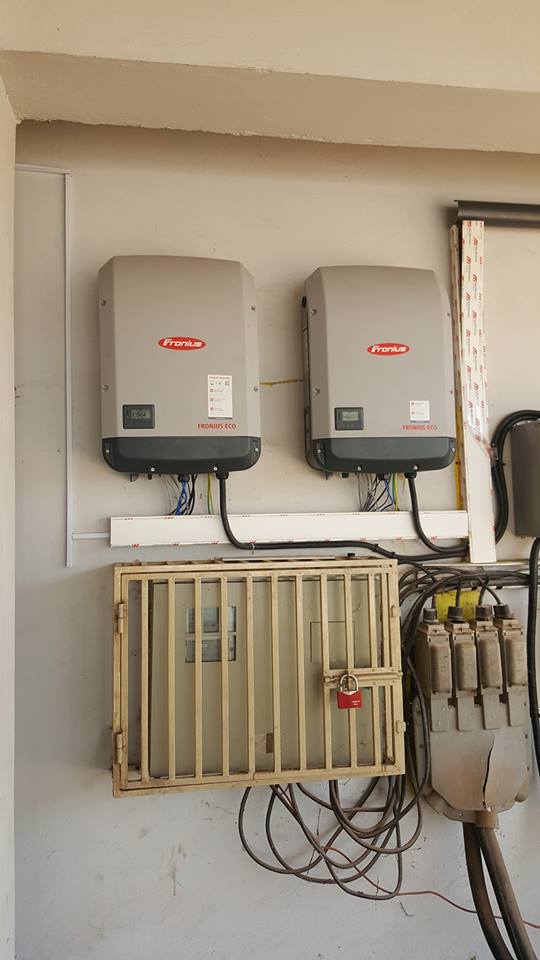
 As the solar inverter industry is becoming more commodified every year, inverter spec sheets are starting to look a lot more similar. Many inverter capabilities are driven by the same market requests and NEC code regulations, making features and pricing very similar across all inverter brands in the market. Therefore, a buyer could think that the only thing to look at is the price tag. However, it’s crucial to actually look past the spec sheet and the initial purchase price. When picking an inverter, you not only chose a piece of equipment, you are choosing a partner to work with for the next 20+ years. Thus, you might want to look into more than just “the box” and its price.
As the solar inverter industry is becoming more commodified every year, inverter spec sheets are starting to look a lot more similar. Many inverter capabilities are driven by the same market requests and NEC code regulations, making features and pricing very similar across all inverter brands in the market. Therefore, a buyer could think that the only thing to look at is the price tag. However, it’s crucial to actually look past the spec sheet and the initial purchase price. When picking an inverter, you not only chose a piece of equipment, you are choosing a partner to work with for the next 20+ years. Thus, you might want to look into more than just “the box” and its price.
